FAQ - Advanced Bathroom Queries
What Happens if I Flush a Lysol Wipe

We’ve all found ourselves in this scenario before, in front of the toilet, holding a spent Lysol wipe, pondering whether it’s okay to flush it down. Now, let’s explore the realm of plumbing and sewage treatment facilities to reveal the actual facts.
Flushing wipes may seem harmless, but the consequences can be far-reaching. From clogged pipes to damaged septic systems, improper disposal can wreak havoc.
So, join us as we explore the impact and importance of proper wipe disposal.
Key Takeaways
- Flushing Lysol wipes can cause blockages in the plumbing system and expensive repairs may be necessary to fix the damage caused.
- Flushing wipes can lead to clogging and blockages in pipes, resulting in sewage backups and unpleasant odors.
- Flushing wipes can contaminate nearby water sources, introduce microplastics into the water supply, and pose risks to human health and aquatic life.
- Improper disposal of wipes can lead to clogged pipes, increased maintenance costs, and potential equipment damage in wastewater treatment systems, as well as issues with septic systems.
Can Lysol Wipes Be Flushed
Lysol wipes can’t be flushed down the toilet. Flushing them can cause blockages in the plumbing system, leading to costly repairs.
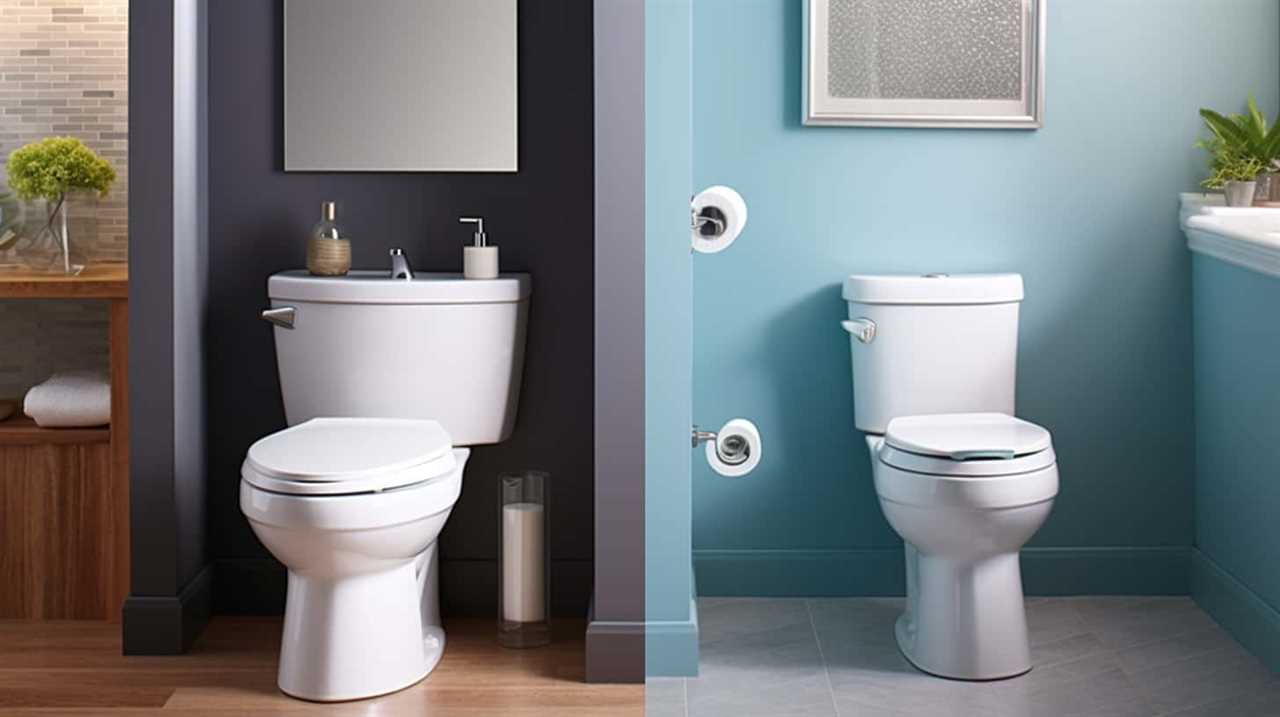
When it comes to disposing of Lysol wipes, it’s important to understand that they aren’t designed to break down in water like toilet paper.
While they can’t be composted due to their synthetic material, they can be discarded in the trash.
It’s important to note that Lysol wipes can’t be recycled either, as they’re made of a combination of synthetic fibers and cleaning chemicals.
Therefore, the best practice is to dispose of them in the appropriate waste bin to avoid any negative impact on the environment and plumbing systems.

Plumbing Problems Caused by Flushing Wipes
When wipes are flushed down the toilet, they can cause clogged pipes and backups in the plumbing system.
The non-biodegradable materials in the wipes don’t break down easily, leading to blockages and reduced water flow.
As a result, expensive repairs may be necessary to fix the damage caused by flushing wipes, including potential damage to pipes, pumps, and sewage systems.
Clogged Pipes and Backups
Clogging and backups are common consequences of flushing wipes, which can lead to costly plumbing issues. When wipes are flushed down the toilet, they can accumulate in the pipes, causing blockages and hindering the flow of wastewater. Over time, these clogs can become more severe, resulting in complete pipe blockages and sewage backups.
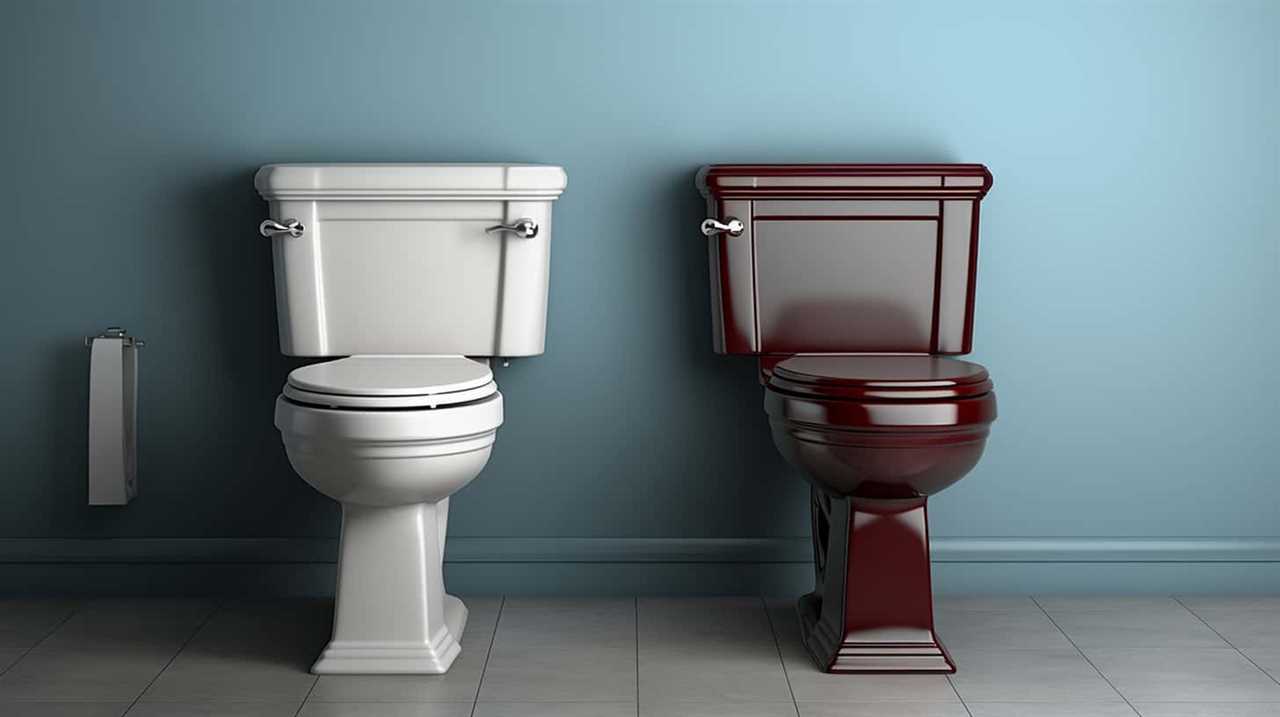
To understand the impact of flushing wipes on plumbing systems, let’s take a look at the table below:
| Plumbing Issues | Description |
|---|---|
| Clogged Drains | Wipes can accumulate in the pipes, obstructing wastewater flow. |
| Sewage Backups | Severe clogs can lead to wastewater backing up into your home. |
Both clogged drains and sewage backups require professional intervention to resolve. Plumbers may need to use specialized tools to remove the blockages and restore proper flow. It’s important to note that the costs of repairing these plumbing issues can quickly add up. Therefore, it’s crucial to avoid flushing wipes to prevent these problems from occurring in the first place.
Expensive Repairs and Damage
Flushing wipes can result in costly repairs and cause extensive damage to plumbing systems. When wipes are flushed down the toilet, they can accumulate and create blockages in the pipes. These blockages can lead to backups and overflows, causing water damage to your home. The cost of repairing the plumbing system can be significant, especially if the damage is severe.
Not only do you have to pay for the repairs, but you may also have to deal with the additional expenses of water damage restoration. Furthermore, the environmental impact of flushing wipes shouldn’t be overlooked. Wipes don’t break down like toilet paper, and they can contribute to clogging in sewer systems and water treatment facilities. This can lead to increased maintenance costs and potential harm to the environment.
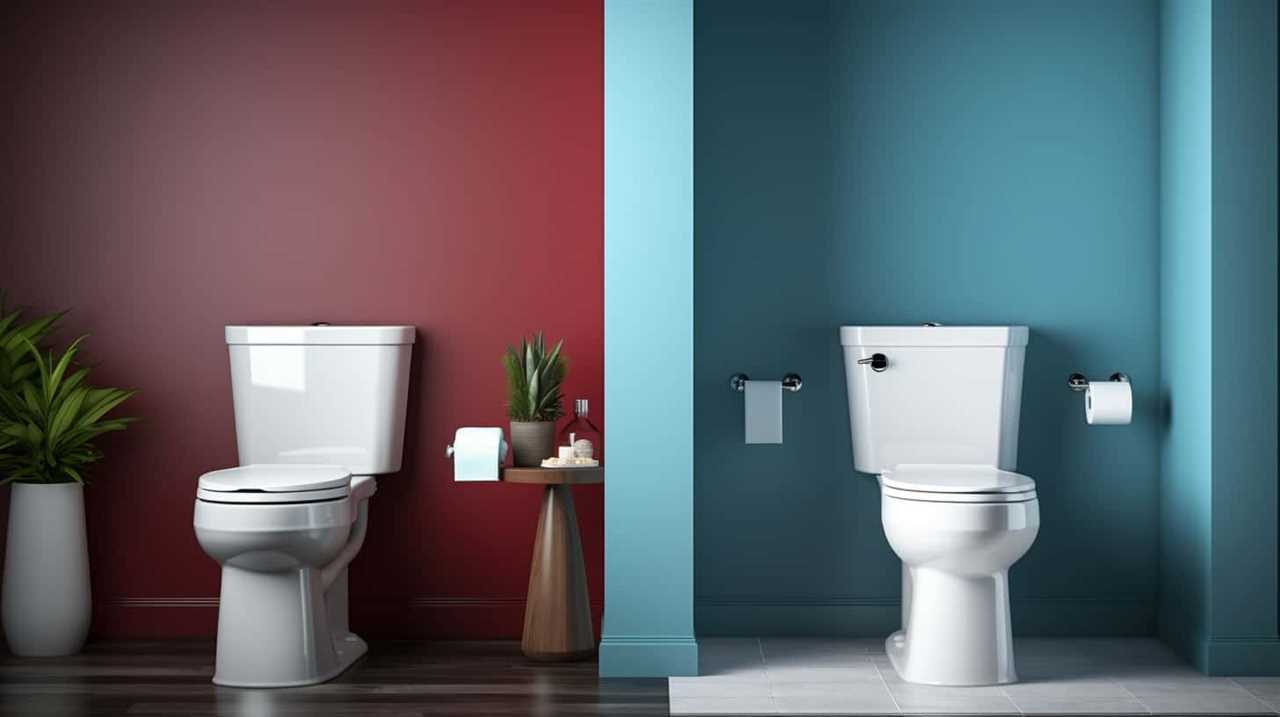
Therefore, it’s crucial to avoid flushing wipes to prevent expensive repairs and mitigate the environmental impact.
The Impact on Wastewater Treatment Systems
Using wipes like Lysol in the toilet can have significant consequences for wastewater treatment systems. The improper disposal of wipes can lead to clogged pipes, increased maintenance costs, and potential damage to equipment in the treatment process. But beyond the financial implications, there are also serious public health concerns associated with wastewater contamination. These wipes can contain harmful chemicals and bacteria that can contaminate the water supply, posing a risk to both human and environmental health. To further illustrate the impact of flushing wipes, consider the following table:
| Consequences of Flushing Wipes | |
|---|---|
| Clogged Pipes | Increased Maintenance Costs |
| Equipment Damage | Wastewater Contamination |
| Public Health Concerns | Environmental Risks |
As you can see, flushing wipes not only affects the efficiency of wastewater treatment systems but also has far-reaching consequences for public health and the environment. It is crucial to properly dispose of wipes in designated trash bins to avoid these issues and maintain the integrity of our wastewater treatment systems.
Clogging and Blockages in Pipes
When it comes to clogging and blockages in pipes, flushing Lysol wipes can cause significant damage. These wipes aren’t designed to break down easily in water, leading to the accumulation of debris and buildup in the pipes. As a result, clogs can occur, leading to expensive plumbing repairs and potential backups.

Additionally, the environmental impact of flushing these wipes shouldn’t be overlooked, as they can contribute to pollution and harm aquatic ecosystems.
Pipe Damage From Clogs
To prevent pipe damage from clogs, we should be mindful of what we flush down the toilet. Proper pipe maintenance and water conservation practices are crucial in ensuring the longevity of our plumbing systems.
Clogs occur when foreign objects and debris accumulate within the pipes, obstructing the flow of water. Over time, these blockages can cause pressure buildup, leading to pipe damage. It’s essential to avoid flushing items such as wipes, paper towels, and feminine hygiene products, as they don’t disintegrate easily and can get tangled in the pipes.
Additionally, practicing water conservation by using less water during each flush can help prevent clogs by reducing the amount of waste and debris that enters the pipes. Regular pipe maintenance, including periodic inspections and cleaning, can also help identify and address any potential clogs before they cause significant damage.
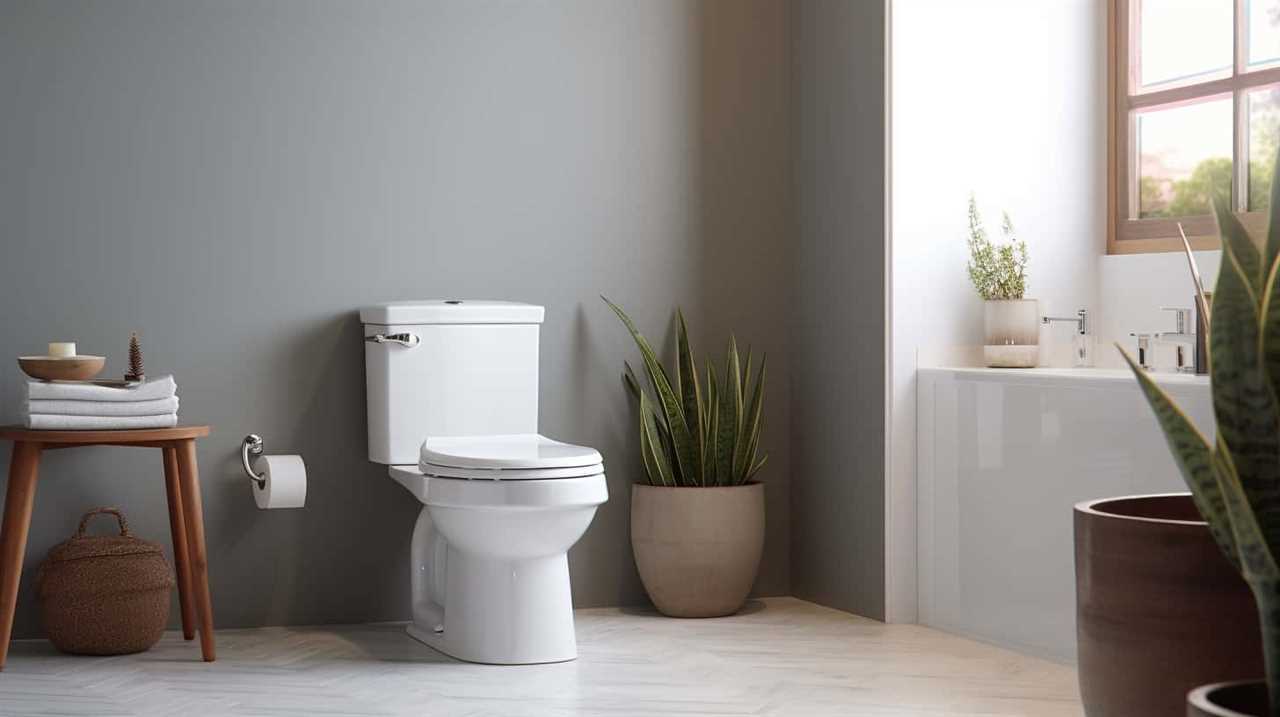
Expensive Plumbing Repairs
We can avoid expensive plumbing repairs by being mindful of what we flush down the toilet. Flushing items that aren’t designed to be flushed, such as wipes, can lead to clogging and blockages in our pipes. These clogs can cause significant damage to our plumbing system, resulting in expensive consequences.
When wipes are flushed, they can get caught in the pipes, creating a blockage that prevents proper water flow. Over time, the accumulation of these non-biodegradable materials can lead to extensive pipe damage, requiring costly repairs.
Not only does flushing wipes have expensive consequences, but it also poses environmental harm. These wipes don’t break down easily and can contribute to sewage backups and overflows, contaminating our waterways. Therefore, it’s crucial to be aware of the potential expensive repairs and environmental impact of flushing non-flushable items like wipes.
In the subsequent section, we’ll delve into the environmental impact of flushing and explore how it affects our ecosystems and water sources.

Environmental Impact of Flushing
Flushing wipes can lead to clogging and blockages in pipes, causing significant damage to our plumbing system. This not only results in costly repairs but also has a detrimental impact on sewage systems and the environment. When wipes are flushed down the toilet, they do not break down like toilet paper. Instead, they accumulate and form clumps that can obstruct the pipes, leading to blockages. These blockages can cause sewage backups, resulting in unpleasant odors, unsanitary conditions, and potential contamination of nearby water sources. To emphasize the impact of flushing wipes, consider the following table:
| Impact on Sewage Systems | Environmental Contamination |
|---|---|
| Clogging and blockages | Sewage backups |
| Costly repairs | Unpleasant odors |
| Disruption of services | Contamination of water sources |
The improper disposal of wipes through flushing not only poses a risk to our plumbing infrastructure but also contributes to environmental pollution and potential health hazards. As we delve deeper into the consequences of flushing wipes, it’s important to understand the potential damage they can cause to septic systems.
Potential Damage to Septic Systems
When flushing a Lysol wipe, it can cause potential damage to septic systems. Septic tank issues can arise from the improper disposal of wipes, leading to costly repairs and disruptions in the functioning of the system.
To better understand the potential damage, here are three key points to consider:
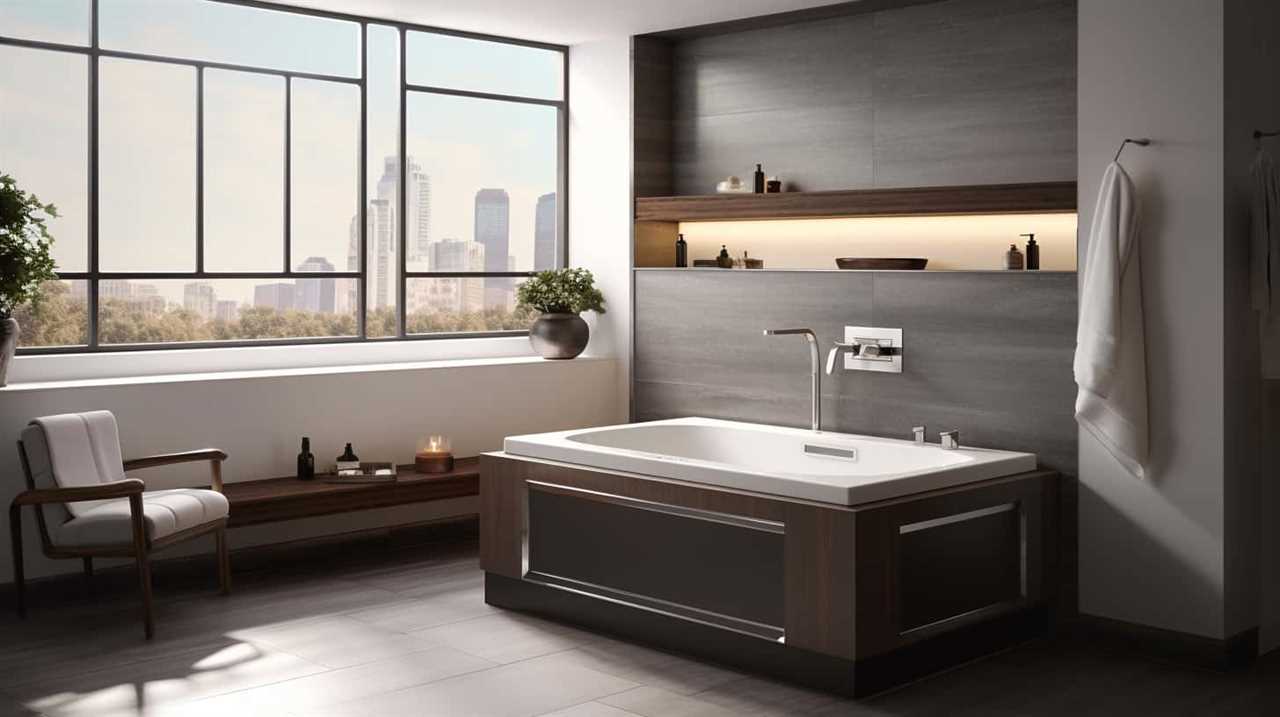
- Clogging: Lysol wipes aren’t designed to break down easily in water, which can lead to clogs in the septic system. These clogs can obstruct the flow of wastewater, leading to backups and potential damage to the pipes and septic tank.
- Reduced Efficiency: The presence of non-biodegradable wipes can disrupt the natural breakdown of waste in the septic tank. This can cause a buildup of solids and reduce the overall efficiency of the system, requiring more frequent septic system maintenance.
- System Failure: In severe cases, the accumulation of wipes can cause the septic system to fail completely. This can result in sewage backups, foul odors, and the need for extensive repairs or even replacement of the entire system.
Considering the potential damage to septic systems, it’s crucial to properly dispose of wipes in the trash rather than flushing them. This not only helps to avoid septic tank issues but also prevents further environmental consequences of flushing wipes.
Environmental Consequences of Flushing Wipes
As we continue discussing the potential damage to septic systems, it is important to address the compound preposition ‘in terms of’ and highlight the environmental consequences of flushing wipes. Flushing wipes can have severe environmental impacts, including clogging prevention in wastewater systems and raising environmental awareness about the need for proper disposal methods. When wipes are flushed down the toilet, they can accumulate in pipes and cause blockages, leading to costly repairs and potential sewage overflows. To emphasize the importance of proper disposal, let’s take a look at the table below:
| Environmental Consequences of Flushing Wipes |
|---|
| Clogging Prevention |
| Increased pressure on wastewater treatment |
| Reduced water flow |
| Potential for sewage spills |
| Risk of polluting water resources |
These consequences serve as a reminder of the need to dispose of wipes in the trash bin rather than flushing them. In the subsequent section, we will delve into the issue of microplastics and water pollution caused by flushing wipes.
Microplastics and Water Pollution
To further understand the environmental consequences of flushing wipes, let’s now delve into the issue of microplastics and water pollution caused by this improper disposal method. Flushing wipes introduces microplastics into the water supply, which can have detrimental effects on both the environment and human health. Here are three key points to consider:
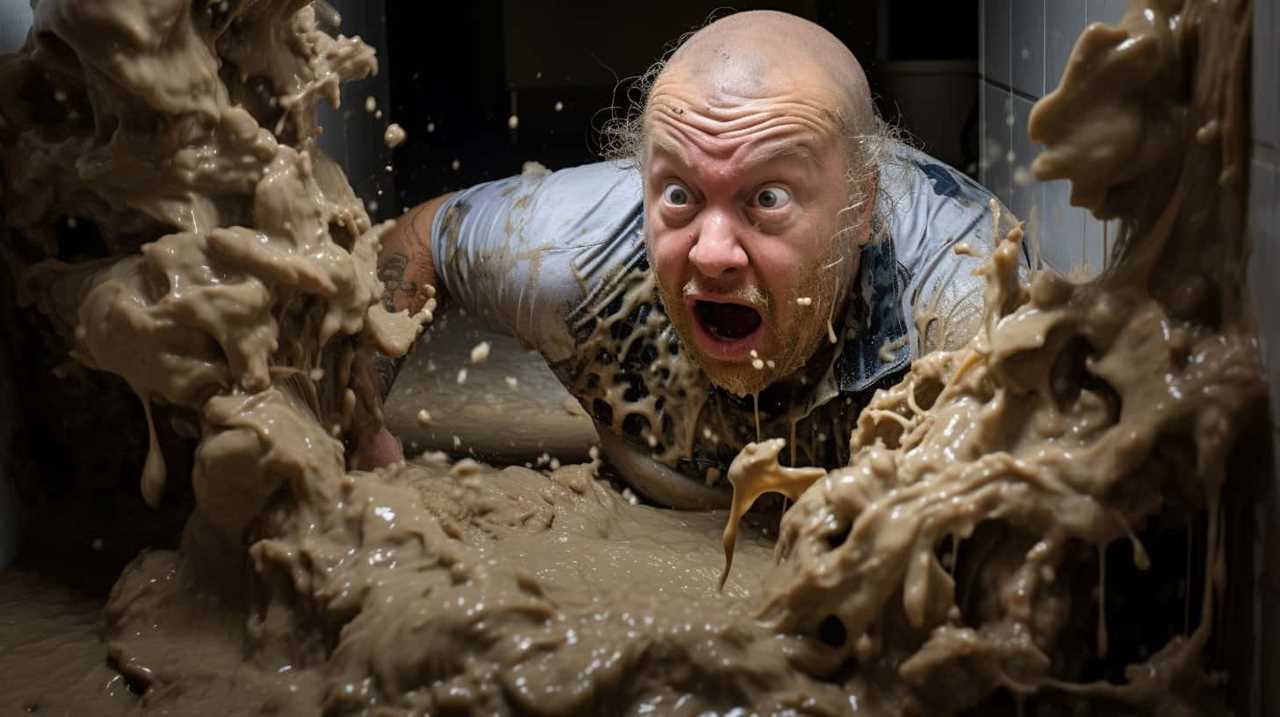
- Microplastics in drinking water: Flushing wipes releases tiny plastic particles into the wastewater system, which ultimately make their way into rivers, lakes, and oceans. These microplastics can then contaminate drinking water sources, posing a risk to human consumption.
- Health risks of microplastics: Research suggests that microplastics can have negative impacts on human health. These particles may contain harmful chemicals that can be absorbed by the body, potentially leading to various health issues such as inflammation, oxidative stress, and even organ damage.
- Environmental implications: Microplastics not only pose risks to human health but also disrupt ecosystems. Marine life can mistake microplastics for food, leading to ingestion and bioaccumulation of toxins up the food chain. This can have severe consequences for the overall balance and health of aquatic ecosystems.
It is crucial to understand the potential dangers of flushing wipes and take appropriate measures to dispose of them properly, in order to mitigate the risks of microplastics and water pollution.
Risks to Aquatic Life
When considering the risks to aquatic life associated with flushing Lysol wipes, it’s crucial to examine the potential impacts on marine pollution, ecosystem disturbance, and long-term consequences.
The presence of Lysol wipes in aquatic environments can contribute to the pollution of our oceans, rivers, and lakes, affecting the delicate balance of marine ecosystems.
Furthermore, the disturbance caused by these wipes can disrupt the natural habitats of aquatic organisms, leading to adverse effects on their survival and reproduction.

Ultimately, the long-term consequences of flushing Lysol wipes can pose a significant threat to the health and sustainability of aquatic life.
Marine Pollution Impacts
We are aware of the potential risks to aquatic life when flushing a Lysol wipe. The marine pollution caused by these wipes can have detrimental effects on marine biodiversity and water contamination. Here are three key impacts to consider:
- Harm to Marine Organisms: Lysol wipes contain chemicals that are toxic to aquatic life. When flushed, these chemicals leach into the water, affecting fish, crustaceans, and other marine organisms. They can disrupt their reproductive cycles, impair their immune systems, and even lead to death.
- Disruption of Ecosystem Functions: Marine biodiversity plays a crucial role in maintaining ecosystem balance. When aquatic life is harmed, it can lead to a ripple effect throughout the food chain, affecting other species and ecosystem functions. This disruption can have far-reaching consequences for the overall health of the marine ecosystem.
- Water Contamination: Flushing Lysol wipes introduces harmful chemicals into water bodies, contributing to water contamination. These chemicals can persist in the environment for a long time, posing a risk to not only aquatic life but also to humans who rely on these water sources for drinking, fishing, and recreational activities.
Understanding these impacts highlights the urgent need to address the proper disposal of Lysol wipes and prevent their entry into our waterways. Moving forward, we’ll explore the ecosystem disturbance effects caused by this form of pollution.
Ecosystem Disturbance Effects
Let’s explore the potential risks to aquatic life caused by flushing a Lysol wipe and the resulting ecosystem disturbance effects. Flushing Lysol wipes can have detrimental effects on aquatic ecosystems, as the chemicals present in these wipes can contaminate water bodies and disrupt the delicate balance of marine life. Aquatic organisms, such as fish, amphibians, and invertebrates, can be directly affected by the toxic substances released from the wipes. These chemicals can impair their reproductive capabilities, damage their respiratory systems, and even lead to death. Additionally, the accumulation of non-biodegradable materials, like wipes, can contribute to the decline of ecosystem resilience by hindering the natural flow and functioning of the ecosystem. To mitigate these risks, proper waste management strategies should be implemented to ensure that Lysol wipes and other similar products are disposed of in an environmentally responsible manner.

| Potential Risks to Aquatic Life | Ecosystem Disturbance Effects |
|---|---|
| Contamination of water bodies | Impaired reproductive capabilities |
| Disruption of marine life balance | Damage to respiratory systems |
| Direct negative impact on fish, amphibians, and invertebrates | Decline in ecosystem resilience |
| Possible death of aquatic organisms | Hindrance of ecosystem functioning |
| Accumulation of non-biodegradable materials |
Long-Term Aquatic Consequences
As we delve into the long-term aquatic consequences of flushing a Lysol wipe, it becomes evident that the risks to aquatic life persist far beyond the initial act of disposal. The impact on marine ecosystems can be severe and have long-lasting effects. Here are the three main long-term environmental consequences:
- Water Contamination: When Lysol wipes are flushed, they release chemicals into the water that can contaminate the aquatic environment. These chemicals can be toxic to marine organisms, leading to disruptions in their growth, reproduction, and overall health.
- Habitat Destruction: Lysol wipes that end up in water bodies can accumulate and form clumps, creating blockages in streams, rivers, and other waterways. This can lead to habitat destruction for various aquatic species, disrupting the natural balance of the ecosystem.
- Bioaccumulation: The chemicals present in Lysol wipes can bioaccumulate in the tissues of aquatic organisms over time. As smaller organisms are consumed by larger ones, these chemicals can biomagnify, reaching higher concentrations in the food chain. This poses a significant threat to higher-level predators, including fish and marine mammals.
Understanding these long-term consequences highlights the importance of proper disposal methods to protect our precious marine ecosystems.
Legal Implications of Improper Disposal
Improperly disposing of a Lysol wipe can have legal implications. As responsible citizens, it’s our civic duty to ensure the proper disposal of waste products, including disinfecting wipes. When we fail to do so, we may face legal consequences for our actions.
Disposing of Lysol wipes in an incorrect manner, such as flushing them down the toilet, can lead to clogged pipes and sewage backups. In many jurisdictions, this is considered a violation of local ordinances and may result in fines or penalties.
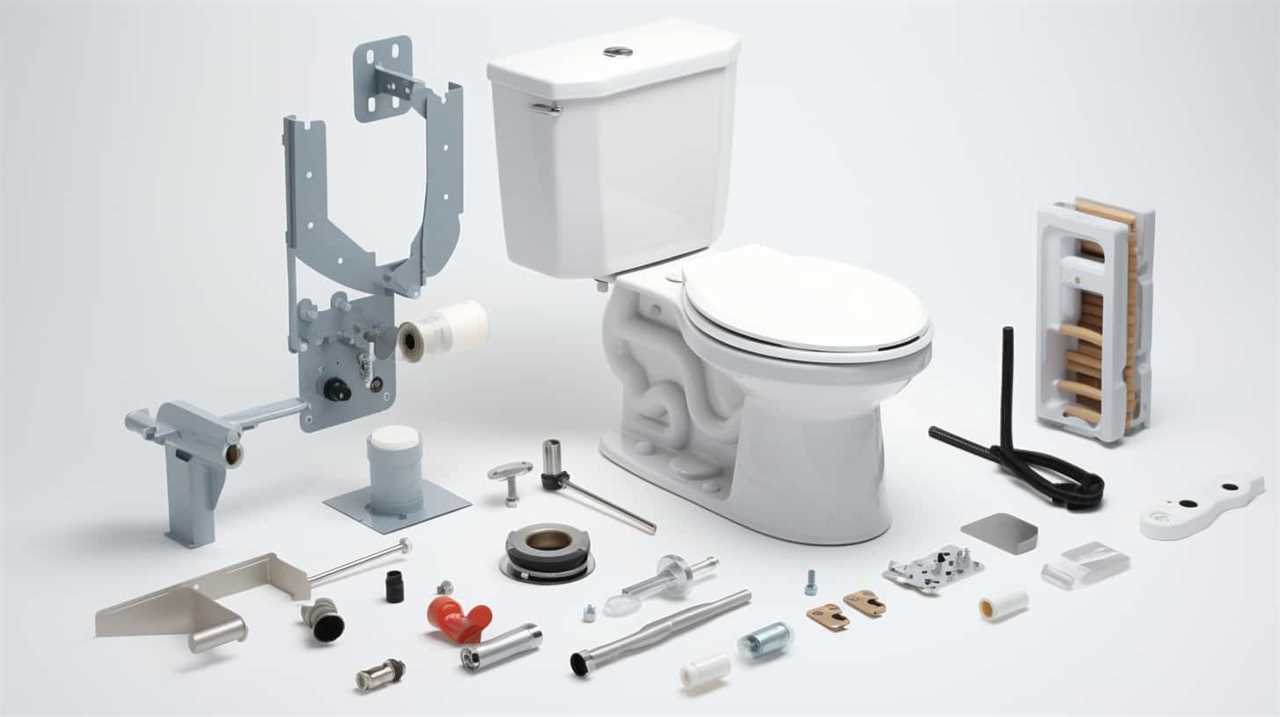
Additionally, improper disposal can harm the environment, polluting water sources and endangering wildlife.
To avoid legal trouble and fulfill our civic responsibilities, it’s crucial to dispose of Lysol wipes in designated trash bins or follow the guidelines provided by local waste management authorities.
Alternatives to Flushing Lysol Wipes
When it comes to safely disposing of Lysol wipes, there are a few alternatives to flushing them down the toilet.
One option is to throw them in the trash, making sure to seal them in a plastic bag to prevent any leakage.

Another eco-friendly option is to use biodegradable wipes that can be composted, reducing environmental impact.
Safer Disposal Methods
For a safer alternative to flushing Lysol wipes, we should consider disposing of them in a designated trash receptacle. Flushing wipes, including Lysol wipes, can have detrimental effects on our environment.
Here are three safer disposal options to consider:
- Separate and Bag: After using a Lysol wipe, separate it from other trash and place it in a plastic bag. This prevents any potential contamination and reduces the risk of accidental exposure.
- Double-Bagging: To further seal in any potential pathogens, consider double-bagging the used Lysol wipes. This additional layer of protection ensures that the wipes are contained and won’t cause any harm.
- Proper Disposal: Dispose of the double-bagged Lysol wipes in a designated trash receptacle. This ensures that they’re handled and disposed of in a controlled and safe manner, minimizing any potential environmental impact.
Eco-Friendly Wipe Options
To continue our discussion on safer disposal methods, let’s explore eco-friendly wipe options as alternatives to flushing Lysol wipes.

When it comes to choosing eco-friendly wipe brands, there are several options available in the market. These wipes are specifically designed to be biodegradable, meaning they can break down naturally over time, reducing their impact on the environment.
One of the benefits of using biodegradable wipes is that they can be safely disposed of in regular trash bins, eliminating the need for flushing. Additionally, these wipes are often made from sustainable materials and are free from harsh chemicals, making them a safer choice for both the environment and our health.
Some popular eco-friendly wipe brands include Seventh Generation, Honest Company, and Babyganics. By opting for these biodegradable alternatives, we can contribute to a cleaner and greener future.
Proper Disposal Methods for Wipes
We can dispose of wipes properly by using designated disposal bins. Proper waste management is crucial for environmental responsibility. Here are three key steps to ensure the correct disposal of wipes:

- Look for designated disposal bins: Many public places, such as restrooms, hospitals, and airports, have designated bins specifically for the disposal of wipes. These bins are equipped to handle and contain the waste safely.
- Don’t flush wipes: Flushing wipes down the toilet can cause blockages in sewer systems, leading to costly repairs and environmental damage. It’s important to educate ourselves and others about the risks associated with flushing wipes.
- Seal the wipes in a bag: If there are no designated bins available, seal the used wipes in a plastic bag before disposing of them in regular trash bins. This helps contain any potential contamination and prevents the spread of germs.
Importance of Following Manufacturer Instructions
Proper adherence to manufacturer instructions is paramount in ensuring the effective and safe use of Lysol wipes. The importance of product safety can’t be overstated, especially when it comes to cleaning products. Manufacturers spend significant time and resources conducting research and testing to determine the correct usage and disposal methods for their products.
By understanding and following these recommendations, users can optimize the performance of Lysol wipes while minimizing any potential risks. Manufacturer instructions provide crucial information on the appropriate surfaces for use, contact time, and precautions to be taken. They also outline specific instructions on how to safely dispose of the wipes after use.
Neglecting to follow these guidelines can lead to ineffective cleaning, damage to surfaces, or even potential harm to individuals. Therefore, it’s essential to prioritize understanding and adhering to manufacturer recommendations to ensure the desired outcomes while maintaining safety.
Educating Others on Proper Disposal Practices
While it’s important to properly dispose of Lysol wipes, flushing them down the toilet can have serious consequences. To educate others on proper disposal practices, we need to emphasize the alternatives to landfill and the composting options available. Here are three key points to consider:

- Recycling: Lysol wipes packaging can often be recycled. Encourage others to check their local recycling guidelines to ensure proper disposal.
- Trash Bin: If recycling isn’t an option, advise others to dispose of used Lysol wipes in a sealed plastic bag and place them in the trash bin. This prevents them from ending up in waterways or clogging sewer systems.
- Composting: Some Lysol wipes are made from biodegradable materials, making them suitable for composting. Inform others about the composting options in their area and encourage them to use this eco-friendly method.
By educating others on these alternatives, we can help reduce the environmental impact of Lysol wipes while promoting responsible waste management practices.
In the next section, we’ll conclude this discussion by emphasizing the importance of thinking before flushing.
Conclusion: Think Before You Flush
To wrap up our discussion on proper disposal practices for Lysol wipes, let’s take a moment to consider the potential consequences of flushing them down the toilet.
While it may seem convenient to dispose of wipes this way, it’s important to understand the potential health risks and environmental impact. Flushing Lysol wipes can lead to clogged pipes and sewer backups, resulting in costly repairs and disruptions to the sewage system.

Moreover, these wipes can contain chemicals that are harmful to aquatic life and can contaminate water sources.
Safer disposal options include throwing used wipes in the trash, placing them in sealed plastic bags, or utilizing composting facilities if available.
Conclusion
In conclusion, it’s crucial to think before flushing Lysol wipes.
The potential plumbing problems, damage to wastewater treatment systems, clogging in pipes, and harm to septic systems make proper disposal methods imperative.
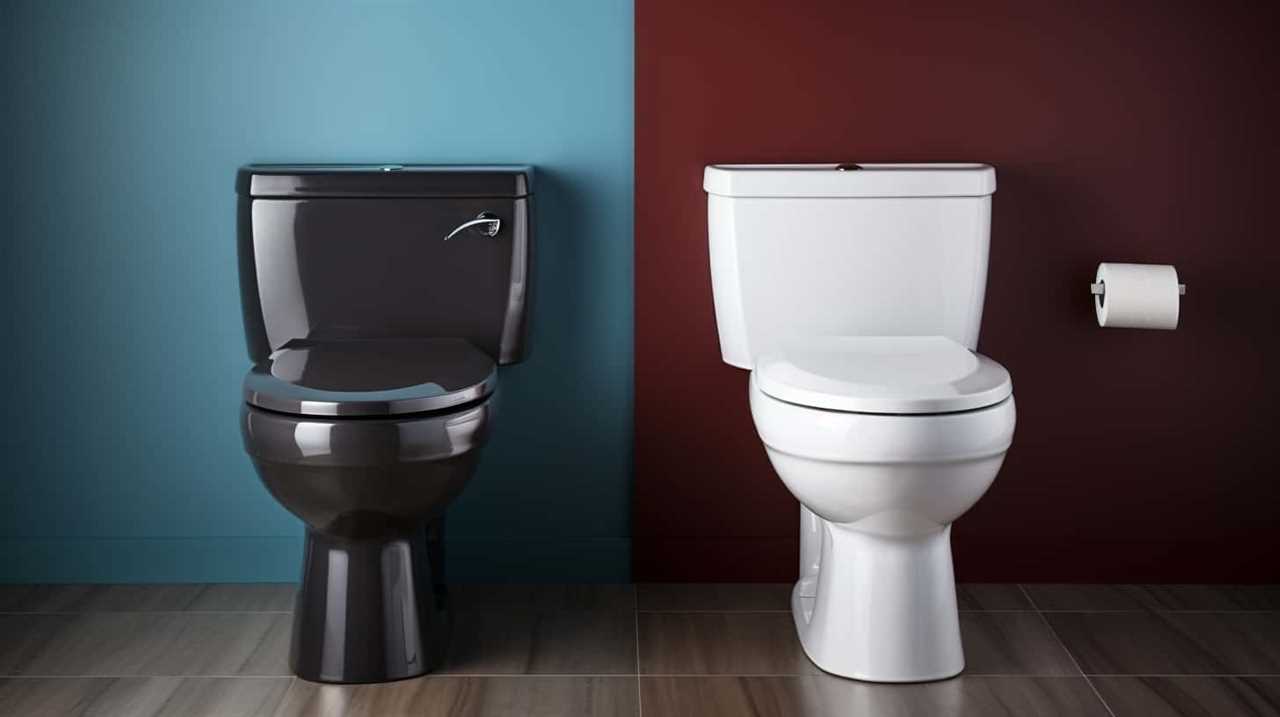
Following the manufacturer’s instructions and educating others on proper disposal practices are essential.
Let’s remember that responsible and informed actions can prevent unnecessary damage and ensure the smooth functioning of our plumbing and sanitation systems.
With an impeccable eye for detail and a passion for bathroom-related, Ava leads our editorial team gracefully and precisely.
Under her guidance, Best Modern Toilet has flourished as the go-to resource for modern bathroom enthusiasts. In her free time, you might find Ava exploring antique shops and looking for vintage bathroom fixtures to add to her collection.
FAQ - Advanced Bathroom Queries
What Should You Not Flush in the Toilet

We are all aware that the toilet is a mysterious place where items vanish with a quick flush. However, it is important to remember, my friends, that not everything should be disposed of in this porcelain palace. Oh no.
In fact, there are some items that can cause serious damage to our plumbing and the environment.
So, let’s dive into the depths of toilet wisdom and find out exactly what we should not, I repeat, should not flush in the toilet.
Key Takeaways
- Non-biodegradable items such as plastic waste, disposable diapers, wrappers, bottles, and packaging should not be flushed as they can cause blockages in the sewage system and harm marine life.
- Personal hygiene products like tampons, pads, diapers, wipes, and condoms should not be flushed as they can lead to plumbing system blockages and backups.
- Medications and chemicals should not be flushed as they can contaminate water sources and harm aquatic life. They should be properly disposed of at local pharmacies or waste management facilities.
- Oils, grease, fat, paper towels, and wet wipes should not be flushed as they can cause plumbing system damage, contribute to pollution, and harm the environment. Proper disposal methods should be followed to prevent these issues.
Non-Biodegradable Items
When it comes to non-biodegradable items, we need to be mindful of what we flush down the toilet. Plastic waste and disposable diapers are two common examples that should never be flushed.

Plastic waste, such as wrappers, bottles, or packaging, can clog pipes and cause blockages in the sewage system. These items aren’t designed to break down in water and can lead to costly repairs.
Disposable diapers, although convenient, are made from materials that don’t biodegrade easily. Flushing them can lead to significant environmental problems, as they can end up in water bodies, harming marine life and polluting the ecosystem.
It’s crucial to dispose of these items properly in designated waste bins to prevent negative impacts on our plumbing systems and the environment as a whole.
Personal Hygiene Products
We should not flush personal hygiene products down the toilet. Flushing these products can cause blockages in the plumbing system, leading to costly repairs. Additionally, these products can have a detrimental impact on the environment. Proper disposal methods for personal hygiene products include throwing them in the trash or using designated disposal bins. It is important to remember that even if a product is labeled as "flushable," it does not mean it should be flushed. Flushing personal hygiene products can contribute to clogged sewer lines and sewage backups. To emphasize this point, consider the following table:

| Personal Hygiene Products |
|---|
| Tampons |
| Pads |
| Diapers |
| Wipes |
| Condoms |
Medications and Chemicals
In an article titled ‘What Should You Not Flush in the Toilet’, it’s important to address the issue of medications and chemicals that shouldn’t be flushed. Proper disposal of these substances is crucial to minimize their environmental impact and protect our water resources.
Here are three items that should never be flushed down the toilet:
- Medications: Flushing unused or expired medications can contaminate water sources, harming aquatic life and potentially affecting human health. Instead, take them to a local pharmacy or participating collection site for safe disposal.
- Household chemicals: Cleaning products, solvents, and pesticides should never be flushed as they can disrupt wastewater treatment processes and pollute rivers and lakes. Check with your local waste management facility for proper disposal methods.
- Personal care products containing chemicals: Items like tampons, diapers, and wet wipes shouldn’t be flushed, as they can cause blockages in sewer systems and contribute to pollution. Dispose of them in the trash instead.
Oils, Grease, and Fat
To prevent plumbing issues and protect the environment, it is important to properly dispose of oils, grease, and fat. These substances can cause significant damage to both your plumbing system and the environment when they are flushed down the toilet. When oils, grease, and fat enter the plumbing system, they can solidify and create blockages that can lead to costly repairs. Additionally, these substances can have a detrimental environmental impact when they enter sewage systems and waterways, causing pollution and harm to aquatic life. To help you understand the importance of proper disposal, here is a table outlining the environmental impact and potential plumbing problems caused by flushing oils, grease, and fat.
| Substance | Environmental Impact | Plumbing Problems |
|---|---|---|
| Oils | Can contaminate water sources and harm aquatic life | Clogs pipes and causes backups |
| Grease | Pollutes waterways and can be toxic to marine organisms | Solidifies in pipes and causes blockages |
| Fat | Contributes to water pollution and harms ecosystems | Accumulates in pipes and leads to sewer backups |
Paper Towels and Wet Wipes
Let’s talk about why flushing paper towels and wet wipes down the toilet is a bad idea. Not only does it have a negative environmental impact, but it can also cause serious plumbing issues.

Here are three reasons why you should never flush paper towels and wet wipes down the toilet:
- Environmental Impact: Flushing paper towels and wet wipes contributes to clogged sewer systems and can lead to sewage spills. These spills can contaminate our water sources and harm aquatic life. Additionally, these materials don’t break down like toilet paper, leading to increased waste in landfills.
- Plumbing Issues: Paper towels and wet wipes aren’t designed to dissolve in water like toilet paper. Flushing them down the toilet can clog pipes and cause blockages, leading to expensive repairs and potential damage to your plumbing system.
- Costly Consequences: Dealing with plumbing issues caused by flushing paper towels and wet wipes can be a costly affair. Not only will you need to hire a professional plumber to fix the problem, but you may also have to deal with water damage and the inconvenience of not having a functioning toilet.
To avoid these problems, dispose of paper towels and wet wipes in the trash instead of flushing them down the toilet.
Frequently Asked Questions
Can I Flush Non-Biodegradable Items Down the Toilet if They Are Small Enough?
We should never flush non-biodegradable items down the toilet, even if they are small. Doing so can cause potential plumbing issues such as clogs and blockages. It’s important to dispose of these items properly.
Why Can’t I Flush Personal Hygiene Products Down the Toilet?
Flushing personal hygiene products can have a negative environmental impact. It’s important not to flush them because they can clog pipes and sewage systems. Instead, dispose of them in the trash to avoid potential problems.

Is It Safe to Flush Medications and Chemicals Down the Toilet?
Flushing expired medications and chemicals down the toilet is not safe. Proper disposal is essential to protect both our environment and our health. Let’s explore the correct ways to dispose of these items.
Can Small Amounts of Oil, Grease, or Fat Be Safely Flushed Down the Toilet?
Flushing oils and chemicals can have a negative impact on the environment and sewage systems. It is important to avoid flushing non-biodegradable items to prevent clogs and contamination.
What Is the Difference Between Flushing Paper Towels and Wet Wipes and Flushing Toilet Paper?
Flushing paper towels and wet wipes may seem similar to flushing toilet paper, but the difference lies in their environmental impact. Non-biodegradable items like these can clog pipes and harm marine life. It’s best to dispose of them properly.
Conclusion
In conclusion, when it comes to flushing items down the toilet, it’s crucial to remember that not everything is meant to go down the drain.

Non-biodegradable items, personal hygiene products, medications and chemicals, oils, grease, fat, and paper towels and wet wipes should never be flushed. These items can cause blockages in the plumbing system and harm the environment.
So, let’s be mindful of what we flush, and keep our toilets and our planet healthy and happy.
With an impeccable eye for detail and a passion for bathroom-related, Ava leads our editorial team gracefully and precisely.
Under her guidance, Best Modern Toilet has flourished as the go-to resource for modern bathroom enthusiasts. In her free time, you might find Ava exploring antique shops and looking for vintage bathroom fixtures to add to her collection.
FAQ - Advanced Bathroom Queries
What Happens if You Flush the Toilet When the Water Softener Is Regenerating

As water softening aficionados, we understand the significance of regular upkeep. But what occurs if we inadvertently flush the toilet while the water softener is regenerating?
Well, let us dive into the technicalities. Flushing the toilet during regeneration can lead to potential damage to the water softener system, reduced effectiveness of water softening, increased water hardness in the plumbing system, risk of clogging or backup, and an extended regeneration process with unnecessary water waste.
It’s vital to understand the consequences and avoid such missteps to ensure a mastery over water softening.
Key Takeaways
- Flushing the toilet during regeneration can cause potential damage to the water softener system.
- Water usage during regeneration reduces the effectiveness of water softening.
- Flushing the toilet during regeneration increases water hardness in the plumbing system.
- Flushing the toilet during regeneration poses a risk of clogging or backup in the plumbing.
Potential Damage to the Water Softener System
When flushing the toilet while the water softener is regenerating, potential damage to the water softener system can occur. This is because the regenerating process involves flushing out the accumulated minerals from the resin tank and replenishing it with fresh salt. Interrupting this process by flushing the toilet can disrupt the delicate balance and cause a potential system malfunction.

The impact on water quality can also be significant. The minerals that were meant to be removed during regeneration mightn’t be fully eliminated, leading to hard water issues. Additionally, the interruption can cause the system to overwork, potentially leading to excessive wear and tear on its components.
To avoid potential damage to the water softener system, it’s advisable to refrain from flushing the toilet during the regeneration process.
Reduced Effectiveness of Water Softening
How does flushing the toilet during water softener regeneration impact the effectiveness of water softening?
When the water softener is regenerating, it’s crucial to avoid using water in order to ensure optimal performance. Flushing the toilet during this process can lead to reduced effectiveness of water softening.

This is because the regeneration process involves flushing out the accumulated minerals and replacing them with new sodium ions. However, when water is used during this time, it disrupts the regeneration process, leading to incomplete removal of minerals from the resin bed.
As a result, the water may still contain hardness minerals, resulting in decreased soap lathering and increased scale buildup. Therefore, it’s important to avoid using water, including flushing the toilet, during the water softener regeneration process to maintain the effectiveness of water softening.
Increased Water Hardness in the Plumbing System
Flushing the toilet during water softener regeneration can result in an elevation of water hardness in the plumbing system. When the water softener is regenerating, it is temporarily unable to remove the minerals that cause water hardness. As a result, these minerals can enter the plumbing system and increase the water hardness. This can have several potential solutions, such as installing a bypass valve to divert water away from the water softener during regeneration. Additionally, it is important to consider the impact on appliances. Increased water hardness can lead to mineral buildup in appliances, reducing their efficiency and lifespan. Regular maintenance and descaling of appliances, such as dishwashers and washing machines, can help mitigate the effects of increased water hardness.
| Potential Solutions | Impact on Appliances |
|---|---|
| Install bypass valve | Mineral buildup |
| Divert water during regeneration | Reduced efficiency |
| Regular appliance maintenance | Decreased lifespan |
Risk of Clogging or Backup in the Plumbing
During water softener regeneration, there’s a risk of clogging or backup in the plumbing system. The water softener goes through a cleaning cycle where it flushes out accumulated minerals. This can cause a temporary increase in water flow and pressure. This increase in pressure can strain weak or damaged pipes, potentially causing leaks or bursts. The high water flow can also dislodge debris or sediment in the pipes, blocking the water flow. To minimize the risk, it’s important to avoid using water-dependent appliances during the regeneration process. Following the recommended maintenance schedule and ensuring proper installation and functioning of the system can help mitigate this risk.

Now, let’s move on to discussing the extended regeneration process and water waste.
Extended Regeneration Process and Water Waste
As we continue our discussion on the risks of clogging or backup in the plumbing system during water softener regeneration, let’s now explore the extended regeneration process and the issue of water waste.
During the extended regeneration process, the water softener goes through several cycles to clean and recharge the resin beads. This process typically takes a couple of hours to complete. However, it’s important to note that during this time, the water softener isn’t able to supply softened water to the household.
Additionally, the extended regeneration process can result in a significant amount of water waste. It’s estimated that for every regeneration cycle, approximately 50-100 gallons of water can be wasted. This not only impacts water bills but also raises concerns about the environmental impact and the overall efficiency of the water softener system.

Therefore, proper water softener maintenance and scheduling can help minimize the impact on water quality and reduce water waste.
Frequently Asked Questions
Can Flushing the Toilet During the Water Softener Regeneration Process Cause Any Harm to the Toilet Itself?
Flushing the toilet during water softener regeneration can potentially cause toilet damage. It is advised to avoid doing so to ensure water softener efficiency and prevent any potential harm to the toilet.
Will the Water Softener Still Work Effectively After Flushing the Toilet During Regeneration?
After flushing the toilet during water softener regeneration, the effectiveness of the softener may be compromised. This can lead to a decrease in water pressure and a potential impact on water quality.
Is There a Risk of Increased Water Hardness in Other Household Appliances, Such as the Dishwasher or Washing Machine, if the Toilet Is Flushed During Regeneration?
Flushing the toilet during water softener regeneration may affect water pressure and potentially shorten the lifespan of the water softener. Increased water hardness in appliances like the dishwasher or washing machine is possible.

Can Flushing the Toilet During Regeneration Lead to Clogging or Backup in Other Areas of the Plumbing System, Such as Sinks or Showers?
When the toilet is flushed during water softener regeneration, it can potentially cause clogging or backup in other areas of the plumbing system, such as sinks or showers. It’s important to prevent this to maintain proper water pressure.
Does Flushing the Toilet During the Regeneration Process Extend the Overall Length of the Regeneration and Result in More Water Waste?
Flushing the toilet during water softener regeneration can impact water pressure. It may result in potential damage to the water softener and increase the length of regeneration, leading to more water waste.
Conclusion
If you flush the toilet during the water softener regeneration process, you could potentially cause damage to the system. This can reduce the effectiveness of water softening and increase water hardness in your plumbing system. Additionally, flushing the toilet during regeneration can risk clogging or backup in your pipes. This can lead to costly repairs and inconvenience. Furthermore, flushing the toilet during regeneration can also result in wasting water. It’s important to be mindful of the regeneration schedule and avoid flushing the toilet during this time to maintain the optimal functioning of your water softener and prevent any potential issues.
With an impeccable eye for detail and a passion for bathroom-related, Ava leads our editorial team gracefully and precisely.
Under her guidance, Best Modern Toilet has flourished as the go-to resource for modern bathroom enthusiasts. In her free time, you might find Ava exploring antique shops and looking for vintage bathroom fixtures to add to her collection.
FAQ - Advanced Bathroom Queries
Where Can You Not Flush Toilet Paper

We’ve all experienced it – facing a toilet, pondering whether we should flush that bundle of toilet paper or not.
Well, here’s a surprising fact: in some places, you can’t flush it at all! From public restrooms to older plumbing systems, there are several situations where tossing that tissue down the drain is a big no-no.
In this article, we’ll explore where you can and can’t flush toilet paper, so you never find yourself in a messy situation again.
Key Takeaways
- Flushing toilet paper in public restrooms can have severe environmental impacts, clog pipes, and strain wastewater treatment facilities.
- Older plumbing systems may not be able to handle flushing toilet paper, leading to clogging and backups in the pipes.
- Many countries with inadequate sewage infrastructure cannot handle flushing toilet paper, leading to clogged pipes, sewage backups, and contaminated water sources.
- Flushing non-biodegradable items can cause blockages in septic systems and disrupt the natural balance of the tank, so it is important to use waste bins and properly dispose of hazardous materials.
Public Restrooms
In public restrooms, it’s important to remember that toilet paper shouldn’t be flushed in certain situations. Proper hygiene practices in public restrooms require us to dispose of toilet paper appropriately. Flushing toilet paper may seem convenient, but it can have severe environmental impacts.

When flushed, toilet paper can clog pipes and sewage systems, causing costly repairs and potential health hazards. Additionally, flushing toilet paper contributes to water pollution and strain on wastewater treatment facilities. By not flushing toilet paper in public restrooms, we can help conserve water, reduce maintenance costs, and protect the environment.
Instead, it’s recommended to use the provided waste bins for proper disposal. Let’s all be mindful of our actions and practice responsible hygiene practices in public restrooms for the benefit of ourselves and the environment.
Older Plumbing Systems
Our older plumbing systems may not be able to handle the flushing of toilet paper. This is due to their historical significance and the environmental impact it can have.
Many older buildings still have outdated plumbing systems that weren’t designed to handle the modern use of toilet paper. These systems were built at a time when people used alternative methods such as bidets or reusable cloths.

Flushing toilet paper in these older systems can lead to clogging and backups in the pipes, causing costly repairs and potential damage to the environment. It’s important to be aware of the limitations of these older plumbing systems and to dispose of toilet paper in the appropriate waste receptacles to prevent any issues.
Countries With Inadequate Sewage Infrastructure
Many countries around the world have inadequate sewage infrastructure that cannot handle the flushing of toilet paper. This poses significant challenges for hygiene practices and has a severe environmental impact. In countries where the sewage infrastructure is inadequate, flushing toilet paper can lead to clogged pipes, sewage backups, and contaminated water sources.
To illustrate the severity of the issue, let’s take a look at the table below, which highlights a few countries facing this problem:
| Country | Hygiene Practices Affected | Environmental Impact |
|---|---|---|
| Haiti | Limited access to clean water and sanitation facilities | Contamination of water sources and increased risk of diseases |
| India | Lack of proper sanitation facilities in rural areas | Pollution of rivers and groundwater |
| Cambodia | Insufficient sewage treatment plants | Water pollution and degradation of ecosystems |
It’s clear that the inadequate sewage infrastructure in these countries not only poses challenges to hygiene practices but also has a detrimental impact on the environment. Efforts should be made to improve and upgrade the sewage systems to ensure proper waste management and protect public health.

Portable Toilets
Moving forward from the discussion on countries with inadequate sewage infrastructure, let’s now explore the topic of portable toilets and their role in addressing the challenges related to proper waste management and hygiene practices.
Portable toilets play a crucial role in providing sanitation solutions in various situations. Here are four key points to consider:
- Temporary Events: Portable toilet rental is essential for outdoor events like concerts, festivals, and sports matches. They ensure that attendees have access to clean and convenient restroom facilities.
- Construction Sites: Portable toilets are commonly used on construction sites where permanent facilities are unavailable. They help maintain proper hygiene practices and ensure the well-being of workers.
- Disaster Relief: During natural disasters or emergencies, portable toilets are vital in providing immediate sanitation solutions in affected areas, preventing the spread of diseases.
- Outdoor Activities: Whether it’s camping, hiking, or boating, portable toilets are essential for maintaining cleanliness and hygiene in remote outdoor locations.
Septic Tanks
Let’s now delve into the topic of septic tanks and their role in addressing waste management and hygiene practices, particularly in relation to portable toilets.
Septic tanks play a crucial role in waste disposal and treatment, providing an efficient and eco-friendly solution for waste management. When it comes to portable toilets, septic tanks are often used to collect and store waste until it can be properly disposed of or treated.

One of the key considerations with septic tanks is their environmental impact. Properly maintained septic tanks can minimize the release of harmful substances into the environment, protecting both human health and ecosystems.
Maintenance requirements for septic tanks include regular pumping, inspection, and proper use of additives to promote the breakdown of organic waste. By adhering to these maintenance practices, septic tanks can effectively manage waste and maintain a healthy environment.
Frequently Asked Questions
How Often Should Public Restrooms Be Cleaned to Ensure Proper Hygiene and Prevent the Spread of Diseases?
We clean public restrooms frequently to maintain proper hygiene and prevent the spread of diseases. Our disease prevention measures include regular cleaning, disinfecting surfaces, and ensuring adequate supply of soap and hand sanitizers.
What Are Some Alternative Options for Disposing of Toilet Paper in Areas With Older Plumbing Systems?
In areas with older plumbing systems, waste disposal can be a challenge. However, there are environmentally friendly alternatives to flushing toilet paper. Let’s explore some options for proper disposal that won’t harm the plumbing.

Can You Provide a List of Countries With the Most Advanced Sewage Infrastructure?
A list of countries with the most advanced sewage infrastructure includes Japan, Germany, and Singapore. These countries have invested in modern technology to efficiently manage wastewater. Bidets are another alternative to toilet paper, with benefits like improved hygiene and reduced environmental waste.
How Are Portable Toilets Emptied and Maintained to Ensure Proper Sanitation?
When it comes to portable toilet maintenance, ensuring proper disposal of waste is crucial. We take the responsibility seriously, employing strict protocols to empty and maintain portable toilets, guaranteeing optimal sanitation for everyone.
What Are the Common Problems That Can Occur With Septic Tanks and How Can They Be Prevented or Resolved?
Common septic tank problems include blockages, leaks, and overflows. Regular septic tank maintenance, such as pumping and inspecting, can help prevent these issues. It’s important to follow proper waste disposal guidelines to avoid further complications.
Conclusion
In conclusion, while it may seem strange to some, there are various places where flushing toilet paper isn’t advisable. Public restrooms, older plumbing systems, countries with inadequate sewage infrastructure, portable toilets, and septic tanks all fall into this category.

It’s crucial to be mindful of these restrictions to prevent clogging and damage to the plumbing systems. So next time you find yourself in one of these situations, remember to dispose of your toilet paper properly and help keep the pipes flowing smoothly.
With an impeccable eye for detail and a passion for bathroom-related, Ava leads our editorial team gracefully and precisely.
Under her guidance, Best Modern Toilet has flourished as the go-to resource for modern bathroom enthusiasts. In her free time, you might find Ava exploring antique shops and looking for vintage bathroom fixtures to add to her collection.
-

 Bathroom Enhancements2 months ago
Bathroom Enhancements2 months agoWill Hot Bath Lower Blood Pressure
-

 FAQ - Advanced Bathroom Queries3 months ago
FAQ - Advanced Bathroom Queries3 months agoWhich Countries Use Bidets the Most
-

 Reviews1 month ago
Reviews1 month agoLDian Smart Toilet Review [2024]
-

 Reviews2 months ago
Reviews2 months agoKohler Innate Smart Toilet Review [2024]
-

 Reviews2 months ago
Reviews2 months agoKohler NUMI 2.0 Smart Toilet Review [2024]
-

 Reviews2 months ago
Reviews2 months agoCANEST Smart Toilet Review: The Ultimate Bathroom Upgrade [2024]
-

 Toilet Types3 months ago
Toilet Types3 months agoAre Bleach Tablets Bad for Your Toilet
-

 Reviews2 months ago
Reviews2 months agoWoodbridge B0970S Smart Bidet Toilet Review [2024]






















